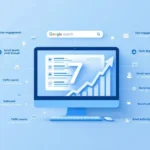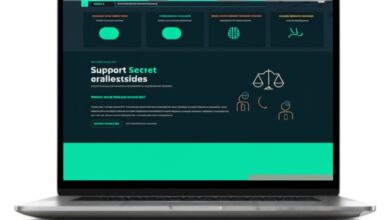
Today, I will take you through a SaaS launch that exceeded my expectations and landed us 81 paying subscribers on day one.
Starting a new business is always nerve-wracking. Would anyone even care? Would all those late nights be worth it?
When I launched my third SaaS startup recently, I wasn’t just hoping for a few signups, I was aiming for impact.
Amazingly, we secured 81 paying customers on day one!
This wasn’t luck or magic—it was strategy.
Key takeaways:
- Creating a crystal-clear landing page that instantly communicates value is non-negotiable
- Pre-launch testing with your target audience reveals critical blind spots
- Removing friction from your onboarding process dramatically increases conversions
Let me walk you through exactly how we made this happen.
Crafting an Irresistible Landing Page
Many founders underestimate the power of first impressions. Your landing page needs to do heavy lifting:
- Ask yourself: Can visitors explain what you do after a 5-second skim? If not, rewrite your copy.
- Motion graphics and explainer videos create immediate understanding (we used Jitter for ours)
- Focus relentlessly on pain points—we highlighted how frustrating generic AI content and constant copy-pasting had become
According to Nielsen Norman Group research, users typically spend just 10-20 seconds on a webpage before deciding whether to stay or leave.
Our landing page was designed to communicate value within that crucial window.
Test, Listen, and Iterate
The market always tells the truth—you just need to listen:
- I personally showed our landing page and app to over 20 people in our target audience
- During these sessions, we applied the “mom-test” principle—never feeding them information, just observing their reactions
- Each conversation led to meaningful improvements
A Stanford University study found that products refined through multiple rounds of user testing have up to 233% higher chance of market success.
Our approach wasn’t revolutionary—just disciplined.
Product Hunt Launch Preparation
Planning our Product Hunt debut took serious preparation:
- Connected with an experienced hunter two weeks in advance who helped refine our launch materials
- Created a compelling demo video showing the product in action
- Prepared all launch assets meticulously (screenshots, descriptions, value propositions)
- Added a special launch banner to our site and engaged with the community consistently
| Launch Prep Timeline | Task | Outcome |
|---|---|---|
| 2 Weeks Before | Find hunter, create initial assets | Secured experienced hunter |
| 10 Days Before | Finalize demo video, refine messaging | Completed high-impact demo |
| 5 Days Before | Set up special offers, prepare emails | Structured 20% discount for first 10 users |
| 1 Day Before | Final checks, schedule social shares | All systems ready |
Our Launch Day Strategy
Launch day isn’t just about announcing—it’s about orchestrating:
- Emailed everyone who had shown interest previously, asking specifically for their support (not spamming)
- Offered a special 20% discount for the first 10 users, creating urgency
- Maintained momentum through coordinated social shares
- Listed our product on 25+ SaaS/AI directory websites, which generated 11 subscribers directly
Research from Harvard Business School suggests early momentum significantly impacts long-term product success.
The first 24-48 hours establish crucial adoption patterns.
Eliminating Onboarding Friction
Every extra step loses potential customers:
- We stripped away unnecessary information requests upfront
- Designed the experience to deliver the “aha moment” as quickly as possible
- While we did require payment information, we recognized this added friction
Looking back, we could have simplified this further.
A Baymard Institute study found that 26% of users abandon purchases because checkout processes are too complicated.
Making Our UI Idiot-Proof
Usability makes or breaks SaaS products:
- We invited several people unfamiliar with our product to use it while we quietly observed
- Shocking moments came when features we thought were obvious went completely unnoticed
- Each confusion point became a target for simplification
These sessions were humbling but invaluable.
A Nielsen Norman Group study confirms that watching just 5 users interact with your product uncovers about 85% of usability problems.
Final Thoughts
Launching with 81 customers on day one wasn’t accidental.
The success came from relentlessly focusing on clarity, testing rigorously with real users, and removing every obstacle between potential customers and their first value experience.
While perfect products don’t exist at launch, good enough products with excellent messaging and minimal friction can create remarkable results.
Our journey proves that methodical preparation and genuine customer focus transform launch day from a hopeful experiment into a meaningful business milestone.
The foundation we built through this process continues to drive our growth today.
If you’re planning your own launch, remember: clarity beats cleverness, testing beats assumptions, and reducing friction beats adding features.






